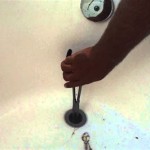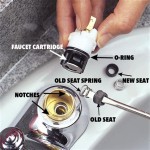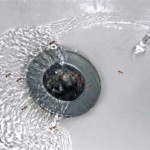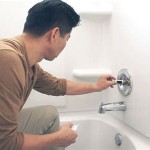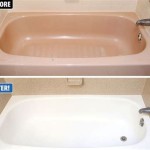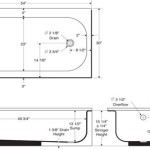How To Unclog A Bathtub Filled With Water
A clogged bathtub filled with standing water presents a more challenging plumbing issue than an empty tub. The standing water adds weight and pressure, making some traditional unclogging methods less effective. This guide outlines several techniques to address this problem safely and efficiently.
Assessing the Clog: Before attempting any unclogging method, it's crucial to determine the likely cause of the blockage. Hair is a frequent culprit, as are soap scum, mineral buildup, and small objects. If the clog is suspected to be caused by a foreign object, attempting certain methods like plunging could push it further down the drain, exacerbating the issue. Visual inspection with a flashlight can sometimes reveal the obstruction.
Removing Standing Water: A significant amount of standing water can interfere with the effectiveness of plunging and chemical drain cleaners. It's recommended to remove as much water as possible before proceeding. This can be achieved using buckets, a wet/dry vacuum, or a small pump specifically designed for removing water.
Manual Removal: If the clog is near the drain opening and visible, attempting manual removal is often the simplest solution. A bent wire hanger, pliers, or tweezers can be used to retrieve hair or other obstructions. Care should be taken not to scratch the bathtub surface.
Using a Plunger: A cup plunger, specifically designed for flat surfaces like bathtubs, is a common tool for unclogging drains. Ensure the plunger cup completely covers the drain opening to create a seal. The standing water should cover the cup's lip for effective plunging. Push and pull the plunger vigorously up and down in a rhythmic motion, maintaining the seal. Repeat this process several times. The clog should dislodge if the plunging creates sufficient pressure.
Employing a Drain Snake (Auger): For clogs located deeper within the drainpipe, a drain snake, also known as a plumbing auger, is a more effective tool. Insert the snake's flexible metal coil into the drain opening and rotate it clockwise while pushing it forward. This action allows the snake to navigate bends in the pipe and break up or retrieve the clog. Once resistance is felt, continue rotating the snake to ensure the clog is thoroughly broken down or hooked for retrieval. Slowly withdraw the snake, cleaning the debris off as you pull it out. Flush the drain with hot water to ensure the clog is completely cleared.
Chemical Drain Cleaners: Chemical drain cleaners can be effective for dissolving clogs composed of hair, soap scum, and grease. However, they should be used with caution. Always follow the manufacturer's instructions precisely, wearing appropriate protective gear like gloves and eye protection. Ensure adequate ventilation in the bathroom. Chemical drain cleaners can damage pipes if used excessively or improperly, and they are not recommended for all types of plumbing systems.
Baking Soda and Vinegar Mixture: A more environmentally friendly alternative to chemical drain cleaners involves using baking soda and vinegar. Pour one cup of baking soda down the drain, followed by one cup of vinegar. The mixture will create a fizzing reaction that can help break down organic matter causing the clog. Cover the drain opening with a stopper to contain the reaction within the pipe. After 30 minutes, flush the drain with hot water.
Boiling Water: Boiling water can sometimes melt soap scum or grease contributing to a clog. Slowly pour a kettle of boiling water down the drain, taking care to avoid splashing. This method is most effective for minor clogs and may need to be repeated several times.
Preventing Future Clogs: Regular preventative measures can significantly reduce the occurrence of clogs. Install a drain strainer to catch hair and other debris before they enter the drain. Flush the drain with hot water after each use to prevent soap scum buildup. Periodically pour a mixture of baking soda and vinegar down the drain as a preventative measure.
Professional Assistance: If the clog persists after attempting these methods, it is advisable to contact a qualified plumber. Persistent clogs may indicate a more complex plumbing issue requiring professional expertise and specialized tools.

How To Easily Unclog Bathtub Shower Drain In 5 Minutes Jonny Diy

How To Unclog A Bathtub Drain 11 Diy Clog Busters

How To Unclog A Bathtub Drain 11 Diy Clog Busters

One Simple Trick To Unclog Your Tub Drain The Creek Line House

How To Unclog A Drain With Standing Water 12 Steps

How To Unclog A Bathtub Drain Homeserve Usa

How To Unclog A Shower Drain Without Chemicals Diy Family Handyman

How To Unclog A Shower Drain With Standing Water Best S
How To Unclog My Bathtub Drain With Standing Water In It Quora

Water Coming Up Through Bathtub Drain Here S Why
Related Posts

